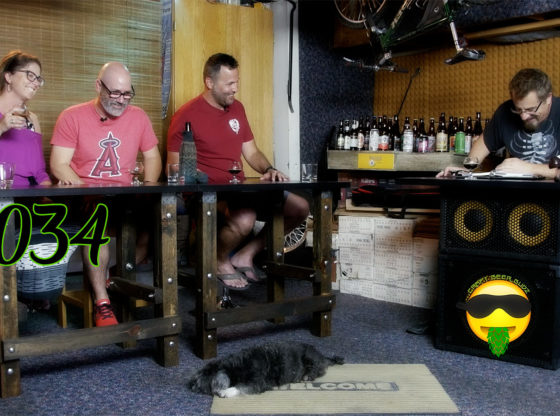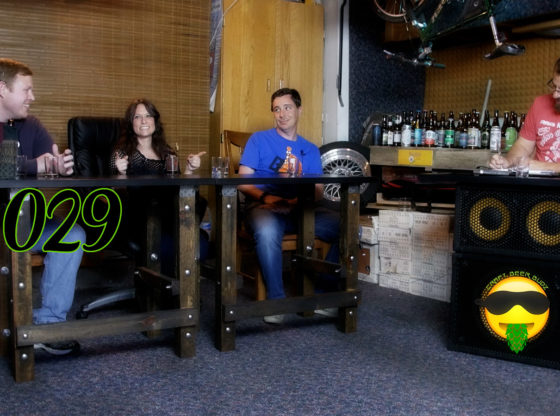Forever in pursuit of higher beer knowledge, I usually take time in the evenings to backtrack over some of the more interesting brew-centric links I encountered earlier in the day but didn’t have a chance to fully explore. One such example is something I found at wired.com. Granted, this is likely not anyone’s go-to source for craft brew culture but any recommendation of “Wonderfully Weird Beers I Should be Drinking” is certainly worth further investigation, regardless of it’s point of origin. While fairly simplistic, it did provide me the names of a dozen beers with which I was unfamiliar, which as far as I’m concerned, was worth the price of admission right there. I then read the following at the top of the comments section following the article:
“this is an incredibly boring and disappointing list with no innovation. get off the over hopped train and pick different saisons, represent more than one style of sour, and pick some wheat beers that are actually good instead of those cult classics that are already sought out by everyone. also, kolsch is a lager, not an ale.”
And a reply to that comment:
“This is what beer writing looks like when done by people who aren’t beer writers. Their suggestions aren’t even bad, there’s just no rhyme or reason to them. It’s roughly the same level of validity as taking suggestions from people on the street. Even if they really were well-versed in what they were writing about here, you’re never going to be able to give insight with one and a half sentences on each beer that simply state information from the label.”
I like to think I know a little about beer, but given the fact I was only familiar with four of the sixteen craft beers named in Wired’s list, I decided to seek the council of some folks over at beeradvocate to test the validity of such harsh criticism. Ultimately, I think we correctly deduced that the “critics” were run of the mill internet malcontents but also, the hardcore aficionado would find some of the selections questionable and a little dated. Six on one hand, half a dozen on the other… However, things got particularly interesting in a side debate which sprung from the comment, “kolsch is a lager, not an ale”… This sent me off on my own little research mission to find out: What is a kolsch, anyway? I’m glad you asked!
Kolsch – “Cologne-ish”
Kolsch is actually the local brew of the city of Cologne (Germany), and in accordance with German law, beers cannot be designated as such unless brewed within 50km of the city. Remember this little factoid should you ever want to go all Good Will Hunting on someone in a tasting room. If anyone ever hands you something locally brewed and tries to call it a kolsch, you’ll be ready to sound like an ass and with nose high in the air, haughtily declare that while what they’re handing you may be a kolsch style beer, it most certainly is not the genuine article. Continue by explaining their mistake to them ad-nauseam in a condescending manner, firmly establishing the fact that you’re a true alpha delta bravo when it comes to craft beers.
Lager vs Ale
If you want to get into some real depth on this, go on over to the Microbrew 101 section for a complete explanation of the difference between lagers and ales. In the meantime, the primary difference for this discussion is that ales are “warm-brewed” with strains of yeast which ferment floating at the top of the tank, while lagers are “cold-brewed” with a different strain of yeast which ferments at the bottom of the tank.
Based on the strain of “top-brewing” yeast and the warm brewing temperatures, a kolsch or kolsch-style beer is most certainly an ale, but after the yeast has been activated, it is cooled or “lagered” (conditioned at low temperatures) as is typical with the beers that are it’s namesake. A kolsch is a lagered ale, and if that isn’t specific enough, it should also only be served in a stange, which is a straight cylinder of a glass with no taper. In fact, most craft brewers will tell you that your typical pint glass is one of the worst ways to fully experience your craft beer, but that discussion for another post…
Conclusion: When it comes to kolsch, if ever the lager vs. ale debate breaks out in your immediate vicinity, you’ll be ready to bullshit with the best of ’em 😀
Cheers!














Just came by and can’t resist to comment: Kölsch (btw only allowed to be brewed in Köln/Cologne) is a top fermented and lagered BEER. Ask a common german what he or she thinks ale is – no one will know. Ale as a terms was and still is only used in english speaking countries. Ale or lager, it’s not a binary choice, get over it…
If you read the article carefully you would have seen that I point out that a TRUE Kölsch must be brewed within 50 miles of the city of Cologne. Anything else can be properly referred to as a Kölsch style beer… That said, lagers and ales are brewed at different temperatures, and with different strains of yeast that become active exclusively at those temperatures. Due to the lower fermentation temperatures, lagers typically take longer to produce than ales, which is one reason why the craft beer scene here in the US is dominated by ales. Because their fermentation times are shorter, it’s easier to keep their taps flowing. I don’t claim to know the complete history of lager vs ale from the European perspective, but here in the US, these are two decidedly different styles of beer which have recognizably different characteristics in taste and alcohol content.
Hank has a point, in Germany they refer to the beverage as beer (or bier) and in all my time there I have never heard a German use the term ale.
That said, we aren’t in Germany and the term ale is used in English speaking countries – which makes sense since ales were first brewed in England.
So Hank can lower his nose a bit as we continue to say that Kolsh style beer is a lagered ale 😉